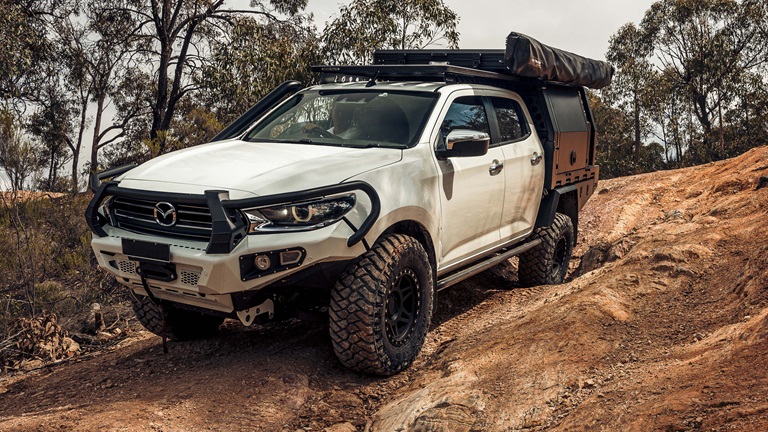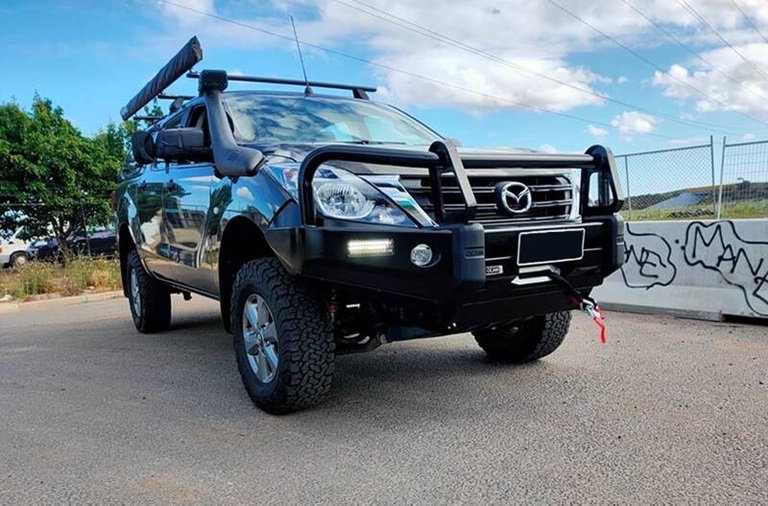Contents
The Mazda BT-50 is a versatile and rugged vehicle, perfect for the adventurous Australian lifestyle. Whether you’re navigating the urban jungle or tackling the outback, a bull bar is an essential accessory for your BT-50. Not only does it provide added protection for the front of your vehicle, but it also enhances its appearance and can be a crucial safety feature.
Having said that, let’s explore the benefits of installing a Mazda BT50 bull bar, the different types available, and key considerations for choosing the right one.
Benefits of Installing a Bull Bar

Enhanced Protection: One of the primary reasons for installing a bull bar is to protect the front of your vehicle. In the event of a collision with an animal or other obstacles, a bull bar can minimise damage to the grille, headlights, and engine components. This is particularly important for those who frequently drive in rural or remote areas where animal strikes are more common.
Improved Safety: Bull bars can also enhance the safety of your vehicle. In a low-speed collision, a bull bar can absorb some of the impact, potentially reducing damage and injury. Additionally, they often come with mounting points for additional accessories such as driving lights, antennas, and winches, which can improve visibility and functionality.
Aesthetic Appeal: Beyond functionality, bull bars can significantly enhance the look of your Mazda BT-50. Available in various styles and finishes, they can give your vehicle a tougher, more aggressive appearance that reflects its off-road capabilities.
Versatility and Functionality: Bull bars are designed to accommodate a range of accessories, making your BT-50 more versatile. Whether you need to mount a winch for recovery situations, add additional lighting for night driving, or attach an aerial for better communication, a bull bar provides the necessary framework.
Types of Bull Bars

Steel Bull Bars: Known for their strength and durability, steel bull bars are a popular choice for those who need maximum protection. They are highly resistant to impact and can withstand harsh conditions, making them ideal for off-road enthusiasts. However, they are heavier than other types, which can affect fuel efficiency and handling.
Aluminium Bull Bars: Lighter than steel but still offering good protection, aluminium bull bars are a great option for those looking to balance weight and durability. They are resistant to rust and corrosion, making them suitable for coastal and humid environments. While not as strong as steel, they are still robust enough for most off-road applications.
Polyethylene Bull Bars: These bull bars are made from high-density polyethylene (HDPE) and are known for their lightweight and flexibility. They can absorb impact without permanent deformation, making them a good choice for city driving where minor bumps are more common. However, they may not offer the same level of protection as steel or aluminium in severe off-road conditions.
Nudge Bars: A lighter and smaller alternative to traditional bull bars, nudge bars provide protection for the lower part of the front grille. They are ideal for urban environments where full bull bars might be overkill. Nudge bars are typically made from aluminium or steel and can also serve as mounting points for accessories.
Key Considerations for Choosing a Bull Bar
Compatibility: Ensure that the bull bar you choose is specifically designed for the Mazda BT-50. This ensures a perfect fit and compatibility with the vehicle’s mounting points and electronics, such as airbag sensors.
Design and Style: Consider the overall design and style of the bull bar. Look for a design that complements the appearance of your BT-50 and meets your functional needs. Some bull bars have a more aggressive look, while others are more streamlined and subtle.
Regulations and Compliance: In Australia, bull bars must comply with specific regulations to ensure they are safe for road use. Make sure the bull bar you choose meets the Australian Standard AS 4876.1-2002, which covers design, testing, and performance requirements for vehicle frontal protection systems.
Material and Finish: The material and finish of the bull bar will affect its durability and appearance. Steel bull bars can be powder-coated or painted for additional protection against rust and corrosion. Aluminium bull bars can be polished for a sleek look or coated for added protection.
Weight: The weight of the bull bar is an important consideration, as it can affect the handling and fuel efficiency of your BT-50. Heavier steel bull bars provide maximum protection but can add significant weight. Aluminium and polyethylene options offer a lighter alternative without compromising too much on durability.
Accessory Mounting: If you plan to add accessories such as lights, winches, or antennas, ensure that the bull bar has the necessary mounting points. This will allow you to customise your BT-50 to meet your specific needs and preferences.
Installation: Consider whether you will install the bull bar yourself or have it professionally installed. Some bull bars are designed for easy installation with basic tools, while others may require more complex fitting and alignment.
Conclusion
A bull bar is a valuable addition to your Mazda BT-50, offering enhanced protection, safety, and versatility. By understanding the different types of bull bars and considering factors such as compatibility, design, material, and weight, you can choose the right bull bar to meet your needs. Whether you’re gearing up for an off-road adventure or simply want to add an extra layer of protection to your daily driver, a bull bar can significantly enhance your BT-50’s capabilities and appearance.

